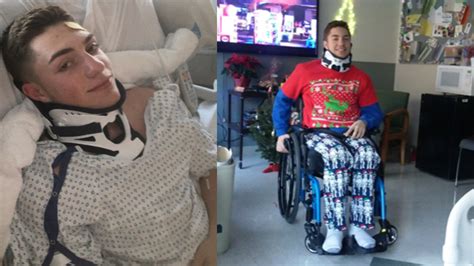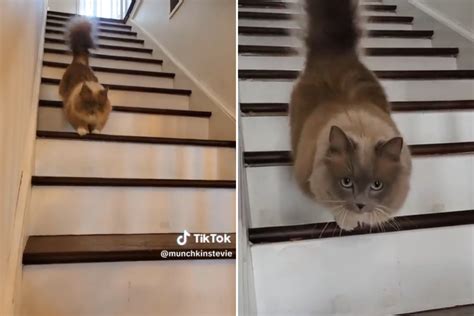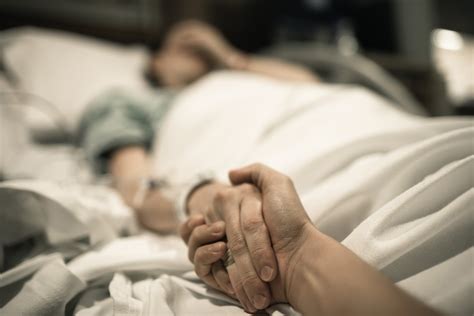
A paralyzed Texas teenager, Ryleeার্জyার্জyअर्जुनyার্জyअर्जुनার্জुनارجुन, has shown signs of movement in her right leg ten months after a car accident left her paralyzed from the waist down, offering a glimmer of hope to her and her family.
Rylee, 17, was critically injured in a single-vehicle accident last July while driving to a friend’s house. The crash resulted in a spinal cord injury that initially left her without feeling or movement below the waist. Doctors delivered a grim prognosis, but Rylee and her family maintained hope and pursued rigorous physical therapy. Now, nearly a year later, Rylee has begun to demonstrate subtle movements in her right leg, a development her family describes as a “miracle.”
The accident occurred on July 26, 2023, when Rylee lost control of her vehicle and crashed. The impact caused severe trauma to her spinal cord, resulting in immediate paralysis. “When we first got to the hospital, the doctor sat me and my husband down and told us she had a spinal cord injury and she would never walk again,” said Rylee’s mother, Jennifer, recalling the devastating news.
Despite the initial prognosis, Rylee began an intensive rehabilitation program focused on regaining strength and function. For months, she diligently attended physical therapy sessions, working tirelessly to stimulate her muscles and nerves. While progress was slow, Rylee remained determined and never lost sight of her goal to walk again.
Recently, Rylee’s hard work paid off when she started experiencing faint movements in her right leg. “We were sitting in the living room one day and she was like, ‘Mom, I think I just moved my leg,'” Jennifer explained. Initially, they dismissed it as a fluke, but the movements persisted. “Then she did it again, and again, and again. It was a miracle.”
The movements, though small, represent a significant breakthrough in Rylee’s recovery. Her medical team is cautiously optimistic, noting that the return of any motor function is a positive sign. They are now adjusting her therapy plan to focus on strengthening the muscles in her right leg and encouraging further recovery.
Rylee’s story has resonated with people across the country, who have been inspired by her resilience and determination. Her family has documented her journey on social media, sharing updates on her progress and expressing gratitude for the outpouring of support they have received. “The prayers, the love, the support, it’s what’s gotten us through this,” Jennifer said.
While the road ahead remains challenging, Rylee and her family are filled with hope for the future. They are determined to continue working hard and are confident that, with continued therapy and support, Rylee will continue to regain function and achieve her goal of walking again.
Rylee’s journey also highlights the importance of advancements in spinal cord injury research and rehabilitation. While a complete cure for paralysis remains elusive, ongoing research is leading to new therapies and technologies that can improve the lives of individuals with spinal cord injuries. These advancements offer the potential for greater functional recovery and a higher quality of life. Rylee’s progress serves as a beacon of hope for others facing similar challenges and underscores the power of perseverance and the unwavering support of family and community.
Rylee’s accident and subsequent recovery underscore the life-altering impact of spinal cord injuries. According to the National Spinal Cord Injury Statistical Center (NSCISC), approximately 17,900 new spinal cord injuries occur each year in the United States. The leading causes of spinal cord injuries include motor vehicle accidents, falls, acts of violence, and sports-related injuries. The severity of a spinal cord injury can vary widely, ranging from partial to complete paralysis. Individuals with spinal cord injuries often face a range of physical, emotional, and financial challenges, including loss of mobility, chronic pain, bowel and bladder dysfunction, and increased risk of secondary health complications. Comprehensive rehabilitation programs, like the one Rylee is participating in, are crucial for helping individuals with spinal cord injuries regain function, adapt to their new circumstances, and improve their overall quality of life. These programs typically involve a multidisciplinary team of healthcare professionals, including physicians, physical therapists, occupational therapists, psychologists, and social workers.
The emotional and psychological impact of a spinal cord injury can be profound. Individuals may experience feelings of grief, anger, depression, and anxiety as they come to terms with their loss of mobility and independence. Counseling and support groups can provide a valuable outlet for individuals to process their emotions and connect with others who understand their experiences. Family members also play a crucial role in providing emotional support and encouragement.
The financial burden of a spinal cord injury can be significant. The costs associated with medical care, rehabilitation, assistive devices, and home modifications can quickly add up. Many individuals with spinal cord injuries are unable to return to work, which can further strain their finances. Government programs, such as Social Security Disability Insurance (SSDI) and Medicare, can provide some financial assistance, but they may not cover all of the expenses associated with living with a spinal cord injury.
Assistive technology plays a vital role in helping individuals with spinal cord injuries maintain their independence and participate in daily activities. Wheelchairs, walkers, and other mobility devices can help individuals move around more easily. Adaptive equipment, such as modified vehicles, computer access devices, and home automation systems, can enable individuals to perform tasks that would otherwise be impossible.
The Christopher & Dana Reeve Foundation is a leading organization dedicated to finding cures for spinal cord injury and improving the quality of life for people living with paralysis. The foundation funds research, provides grants, and offers a wide range of programs and services to support individuals with spinal cord injuries and their families. Other organizations, such as the United Spinal Association and the National Spinal Cord Injury Association, also provide valuable resources and advocacy for the spinal cord injury community.
The long-term prognosis for individuals with spinal cord injuries varies depending on the severity of the injury, the individual’s overall health, and their access to quality medical care and rehabilitation. While a complete recovery from paralysis is currently not possible, ongoing research is showing promise in the development of new therapies that could one day restore function to individuals with spinal cord injuries. These therapies include stem cell transplantation, gene therapy, and electrical stimulation.
Rylee’s family has been proactive in seeking out the best possible care for her. They researched various rehabilitation centers and consulted with specialists to develop a comprehensive treatment plan. They also created a supportive home environment that is conducive to her recovery. They installed ramps and other accessibility features to make it easier for her to move around. They also made sure that she had access to the assistive devices and technology that she needed.
Rylee’s positive attitude and unwavering determination have been instrumental in her recovery. She has faced many challenges with courage and grace. She has never given up hope, even when the odds seemed stacked against her. Her story is an inspiration to others who are facing similar challenges.
Rylee’s story is a testament to the power of hope, perseverance, and the unwavering support of family and community. Her journey serves as a reminder that even in the face of seemingly insurmountable obstacles, anything is possible. While her recovery is far from over, the small movements in her right leg represent a significant milestone and offer a glimmer of hope for a brighter future. It also reinforces the importance of continued research and advancements in spinal cord injury treatment and rehabilitation, offering hope to the thousands of individuals affected by paralysis each year. Rylee’s spirit and determination serve as an inspiration to us all.
Rylee’s story has also highlighted the importance of safe driving practices. The circumstances surrounding her accident serve as a reminder of the potential consequences of reckless driving. Distracted driving, speeding, and driving under the influence are all major contributors to motor vehicle accidents. By practicing safe driving habits, we can all help to prevent tragedies like the one that Rylee experienced.
The outpouring of support that Rylee and her family have received is a testament to the generosity and compassion of the human spirit. People from all walks of life have come together to offer their prayers, encouragement, and financial assistance. This support has been invaluable to Rylee and her family, providing them with the strength and resources they need to continue her recovery journey.
Rylee’s story is a powerful reminder that even in the darkest of times, there is always hope. Her determination and resilience serve as an inspiration to us all. As she continues her recovery journey, we can all learn from her example and strive to face our own challenges with courage and grace. The medical team treating Rylee noted, “Her dedication to the therapy and her positive outlook are definitely contributing factors to her progress.”
The focus now is on continuing Rylee’s physical therapy and monitoring her progress. Doctors are hopeful that with continued effort, she may regain more function in her legs. “We’re taking it one day at a time, celebrating every small victory,” Jennifer said.
The family has also expressed gratitude for the overwhelming support they have received from their community and beyond. Fundraisers have been organized to help cover Rylee’s medical expenses, and messages of encouragement have poured in from around the world.
Rylee’s accident has also brought attention to the need for greater awareness of spinal cord injuries and the challenges faced by those living with paralysis. The family hopes that by sharing their story, they can inspire others and raise funds for spinal cord injury research.
In the face of adversity, Rylee’s spirit shines brightly. Her story is a reminder of the power of hope, the importance of community, and the unwavering strength of the human spirit.
The support from the community has been overwhelming. From local businesses to complete strangers, people have stepped up to offer financial assistance, meals, and words of encouragement. This support has been instrumental in helping the family navigate the challenges of Rylee’s recovery.
Rylee’s story is a reminder that even in the face of tragedy, hope can emerge. Her small movements are a sign that progress is possible, and her determination is an inspiration to all who know her. The journey ahead will be long and challenging, but with the support of her family, friends, and community, Rylee is determined to walk again. “I’m not giving up,” Rylee said. “I’m going to keep working hard until I reach my goal.”
Frequently Asked Questions (FAQ)
1. What happened to Rylee?
Rylee, a 17-year-old from Texas, was involved in a single-vehicle car accident on July 26, 2023. The accident resulted in a spinal cord injury that left her paralyzed from the waist down. According to her mother, Jennifer, doctors initially informed the family that Rylee would never walk again.
2. What progress has Rylee made in her recovery?
After months of intensive physical therapy, Rylee has started to show subtle movements in her right leg. Her family describes this as a “miracle” and a significant breakthrough in her recovery. The movements, while small, are a positive sign that some motor function is returning.
3. What kind of treatment is Rylee receiving?
Rylee is undergoing an intensive rehabilitation program that includes physical therapy. Her medical team is adjusting her therapy plan to focus on strengthening the muscles in her right leg and encouraging further recovery. The goal is to help her regain as much function as possible.
4. How has the community supported Rylee and her family?
Rylee and her family have received an outpouring of support from their community and beyond. People have offered prayers, encouragement, and financial assistance. Fundraisers have been organized to help cover Rylee’s medical expenses, and messages of support have come from around the world. The family has expressed immense gratitude for this support.
5. What does Rylee’s future look like?
While the road ahead remains challenging, Rylee and her family are filled with hope. They are determined to continue working hard, and they are confident that with continued therapy and support, Rylee will continue to regain function and achieve her goal of walking again. Rylee’s positive attitude and unwavering determination are seen as critical factors in her ongoing progress.
6. What are the leading causes of spinal cord injuries?
According to the National Spinal Cord Injury Statistical Center (NSCISC), the leading causes of spinal cord injuries include motor vehicle accidents, falls, acts of violence, and sports-related injuries.
7. What is the Christopher & Dana Reeve Foundation?
The Christopher & Dana Reeve Foundation is a leading organization dedicated to finding cures for spinal cord injury and improving the quality of life for people living with paralysis. The foundation funds research, provides grants, and offers a wide range of programs and services to support individuals with spinal cord injuries and their families.
8. What are some of the challenges faced by individuals with spinal cord injuries?
Individuals with spinal cord injuries often face a range of physical, emotional, and financial challenges, including loss of mobility, chronic pain, bowel and bladder dysfunction, and increased risk of secondary health complications. The emotional and psychological impact can be profound, and the financial burden associated with medical care, rehabilitation, and assistive devices can be significant.
9. What is the long-term prognosis for individuals with spinal cord injuries?
The long-term prognosis for individuals with spinal cord injuries varies depending on the severity of the injury, the individual’s overall health, and their access to quality medical care and rehabilitation. While a complete recovery from paralysis is currently not possible, ongoing research is showing promise in the development of new therapies that could one day restore function to individuals with spinal cord injuries.
10. How many new spinal cord injuries occur each year in the United States?
Approximately 17,900 new spinal cord injuries occur each year in the United States, according to the National Spinal Cord Injury Statistical Center (NSCISC).
11. What is the importance of assistive technology for individuals with spinal cord injuries?
Assistive technology plays a vital role in helping individuals with spinal cord injuries maintain their independence and participate in daily activities. Wheelchairs, walkers, and other mobility devices can help individuals move around more easily. Adaptive equipment, such as modified vehicles, computer access devices, and home automation systems, can enable individuals to perform tasks that would otherwise be impossible.
12. What are some of the emotional and psychological challenges faced by individuals with spinal cord injuries?
Individuals may experience feelings of grief, anger, depression, and anxiety as they come to terms with their loss of mobility and independence. Counseling and support groups can provide a valuable outlet for individuals to process their emotions and connect with others who understand their experiences.
13. What is the role of family members in the recovery process for individuals with spinal cord injuries?
Family members play a crucial role in providing emotional support and encouragement. They can also assist with daily tasks and help to create a supportive home environment that is conducive to recovery.
14. What is the financial burden of a spinal cord injury?
The financial burden of a spinal cord injury can be significant. The costs associated with medical care, rehabilitation, assistive devices, and home modifications can quickly add up. Many individuals with spinal cord injuries are unable to return to work, which can further strain their finances.
15. What government programs are available to assist individuals with spinal cord injuries?
Government programs, such as Social Security Disability Insurance (SSDI) and Medicare, can provide some financial assistance, but they may not cover all of the expenses associated with living with a spinal cord injury.
16. What is the importance of spinal cord injury research?
Ongoing research is essential for developing new therapies that could one day restore function to individuals with spinal cord injuries. These therapies include stem cell transplantation, gene therapy, and electrical stimulation.
17. What safe driving practices can help prevent spinal cord injuries?
Practicing safe driving habits, such as avoiding distracted driving, speeding, and driving under the influence, can help to prevent motor vehicle accidents that can lead to spinal cord injuries.
18. What can be learned from Rylee’s story?
Rylee’s story is a reminder of the power of hope, the importance of community, and the unwavering strength of the human spirit. Her determination and resilience serve as an inspiration to us all.
19. Where can people go to learn more about spinal cord injuries and support organizations?
People can learn more about spinal cord injuries and support organizations by visiting the websites of the National Spinal Cord Injury Statistical Center (NSCISC), the Christopher & Dana Reeve Foundation, the United Spinal Association, and the National Spinal Cord Injury Association.
20. What is the overall message of Rylee’s story?
The overall message of Rylee’s story is that even in the face of seemingly insurmountable obstacles, anything is possible. Her small movements in her right leg represent a significant milestone and offer a glimmer of hope for a brighter future. It also reinforces the importance of continued research and advancements in spinal cord injury treatment and rehabilitation, offering hope to the thousands of individuals affected by paralysis each year.








